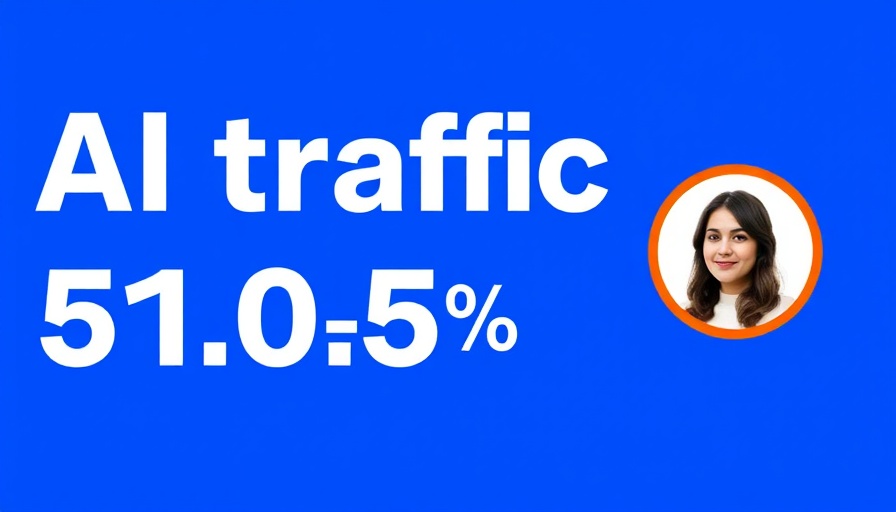
Are You Ready for the AI Traffic Surge?
In a world increasingly driven by technology, one revelation stands tall: a staggering 63% of websites are reaping benefits from artificial intelligence traffic. This insight emerges from a comprehensive study analyzing 3,000 websites, detailing how AI bots like ChatGPT and Claude are contributing to significant online traffic. If you’re in online marketing or business, this data isn't just interesting—it's crucial.
Understanding AI Traffic—A Growing Trend
Artificial intelligence is revolutionizing how consumers interact with the web. With 1,900 out of 3,000 sites logging at least one AI-originating visit, your chances of being seen by an AI bot are promising. In essence, you now have a two in three chance of receiving traffic driven by AI chatbots such as ChatGPT, Claude, and others. This switch reflects a shift in online dynamics—emphasizing the need for marketers to understand, anticipate, and embrace AI-driven trends.
Unpacking AI Chatbot Contributions
With 98% of AI traffic attributed to just three chatbots, it's apparent where most of the heat is coming from. ChatGPT leads the pack, sending a whopping 50% of AI traffic. This dominance is a signal for businesses: if you haven't yet optimized for AI-driven traffic, you risk losing a significant audience. It’s not just about participation; it’s about a proactive approach that emphasizes AI incorporation into supply chains and marketing strategies.
The AI Traffic Math
For many websites, the contribution of AI traffic can seem minuscule—averaging only 0.17%—but that’s where the magic lies. Particularly for smaller websites, AI traffic constitutes a more substantial percentage of their audience engagement. This trend suggests that now is the time to consider how AI traffic can turn the tables for sites struggling with conventional marketing approaches.
Strategies for Harnessing AI Traffic
Monitoring your AI traffic isn't just a good idea; it's essential. It allows you to identify which sources send users to your pages, highlighting key areas for optimization. Discovering your 'AI traffic magnets'—the content pages garnering most of their visitors from AI referrals—can feed into a longer-term strategy aimed at driving user engagement.
Creating AI-Optimized Content
As consumers increasingly interact with AI tools, it's vital to adapt your content strategies accordingly. Techniques explored in various resources, like how to optimize content for AI search, can keep your brand visible and relevant. Researching how LLMs (Large Language Models) crawl and assess your site can bolster your marketing tactics substantially.
Insights from Data: A Clear Path Forward
Data is the backbone of informed marketing decisions. Ahrefs Web Analytics lets you self-analyze your AI traffic patterns, pointing out effective strategies while removing less impactful efforts. Knowing where your traffic comes from informs how to tailor your online presence, ensuring you're not just another faceless web entity.
The Future of AI Traffic
With ongoing advancements in AI and marketing, it's unclear how traffic dynamics will evolve. However, one fact remains: ignoring AI's influence could leave your business in the dust. Adapting to this new digital landscape may not just provide a competitive edge; it may become a necessity to remain viable.
Conclusion: The Challenge and Opportunity Ahead
As this era of AI traffic unfolds, both challenge and opportunity lie ahead for marketers. By diving into AI traffic trends and ensuring your strategies leverage these insights, you could elevate your online presence significantly. Now is the time to shed any preconceived notions of AI marketing as a fleeting trend—it's a fundamental shift in how we engage with consumers. Are you prepared to evolve alongside it?
 Add Row
Add Row  Add
Add 




Write A Comment